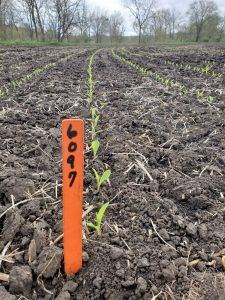Temperature Fluctuations May Inhibit Corn Emergence
 Corn planting occurred at an all-time record this spring. In Iowa in particular, we’ve experienced one of the best planting seasons in history. Recent cool temperatures throughout the Corn Belt, however, are requiring extra close attention be paid to corn fields as those cool temperatures may have caused seedling growth problems.
Corn planting occurred at an all-time record this spring. In Iowa in particular, we’ve experienced one of the best planting seasons in history. Recent cool temperatures throughout the Corn Belt, however, are requiring extra close attention be paid to corn fields as those cool temperatures may have caused seedling growth problems.
We recommend farmers pay particularly close attention to corn fields planted recently, as they would be the most likely to exhibit seedling rot or poorer emergence. For those in low-lying areas, frost may have been an issue, causing leaf necrsosis and delayed growth of sprouted seeds.
Listed below are seedling growth problems to scout for:
- Imbibitional chilling damage — the chilling effect seeds may experience when they imbibe, or absorb, water when soil temperatures are less than 55° F for an extended time. Seedlings may “corkscrew” or not emerge when exposed to cool soil temperatures. This may happen also when temperatures swing rapidly by 30° F.
- Soil crusting — wet soil at planting or heavy rain following planting can lead to reduced plant stands. Significant stand reductions lower yield potential.
- “Leafing out” underground — occurring most often in crusted soils (also appears with imbibitional chilling, above).
- Variable plant emergence and reduced plant population. Variable emergence and growth will reduce yield.
Any of the situations listed above could call for a need to replant, but be sure to assess stands before making this decision.
Contact your Latham representative with any questions or click here to read more.